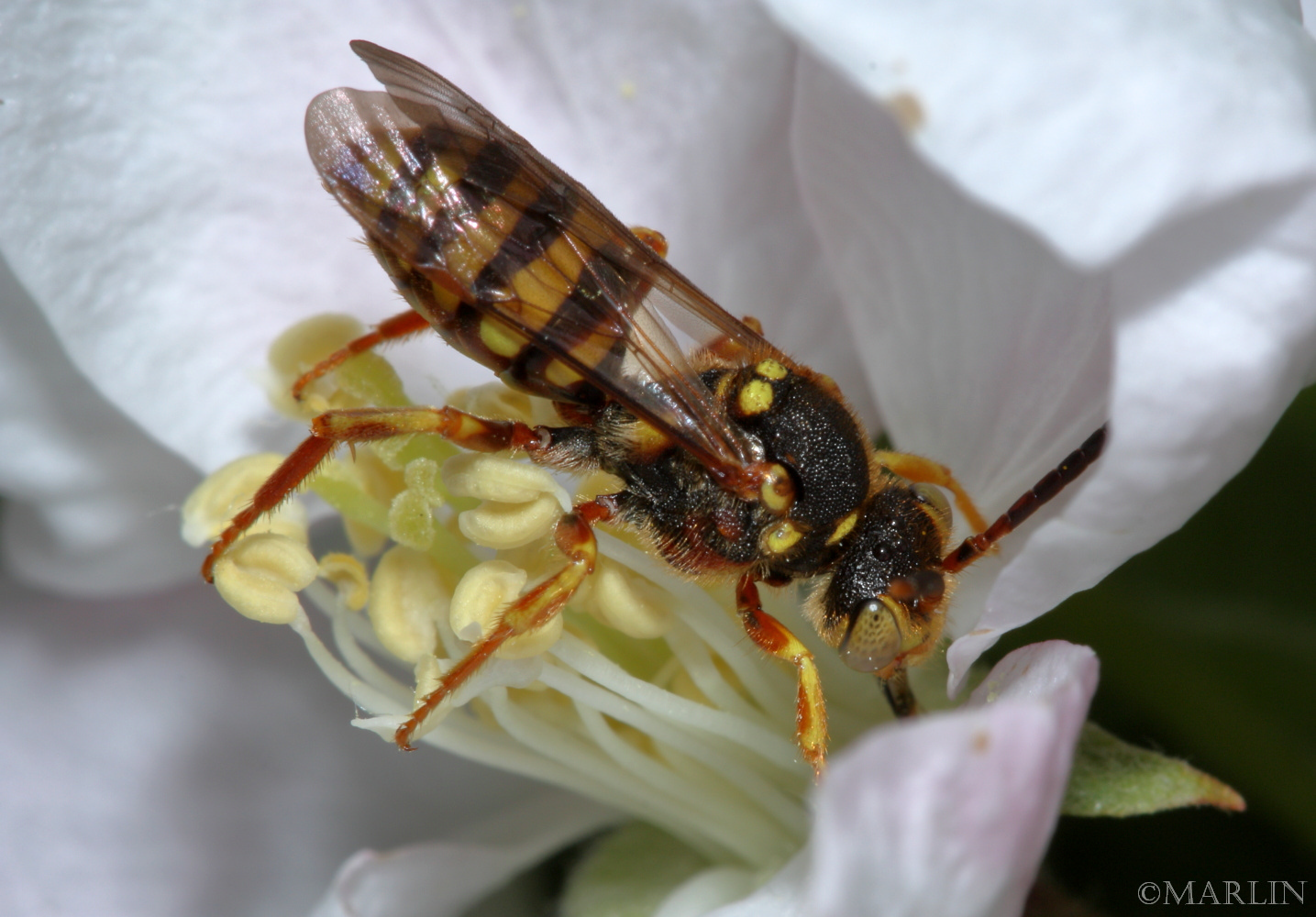Cuckoo Bee – Nomada ruficornis group
Cuckoo Bees are parasites, in that the female cuckoo bee lays her eggs in the nest of other bees, primarily digger and mining bees. Cuckoos are also said to be kleptoparasites, stealing honey and pollen collected by others. Cuckoo bees lack any pollen-transporting apparatus. Look for cuckoo bees flying low over the ground and foliage, hunting for foraging and nesting potential victims.
“There is also a family of cuckoo wasps which lay their eggs in the nests of potter and mud dauber wasps; many types of wasps in various families have evolved similar habits. These insects are normally referred to as “kleptoparasites,” rather than “brood parasites.” The distinction is that the term “brood parasite” is generally restricted to cases where the immature parasite is fed directly by the adult of the host, and raised as the host’s offspring (as is common in cuckoo birds).

Cuckoo Bee – Nomada imbricata
Such cases are virtually unknown in bees and wasps, which tend to provide all of the food for the larva before the egg is laid; in only a few exceptional cases (such as parasitic bumblebees) will a bee or wasp female actively feed a larva that is not her own species. The difference is only in the nature of the interaction by which the transfer of resources occurs (tricking a host into handing over food rather than stealing it by force or stealth), which is why brood parasitism is considered a special form of kleptoparasitism.” — from Wikipedia
Order Hymenoptera – Ants, Bees, Wasps and Sawflies / Family Apidae
Live adult cuckoo bees photographed in the wild at DuPage County, Illinois.
Insects & Spiders | Bees & Wasps Index | Bees & Wasps Main | Beetles Index
